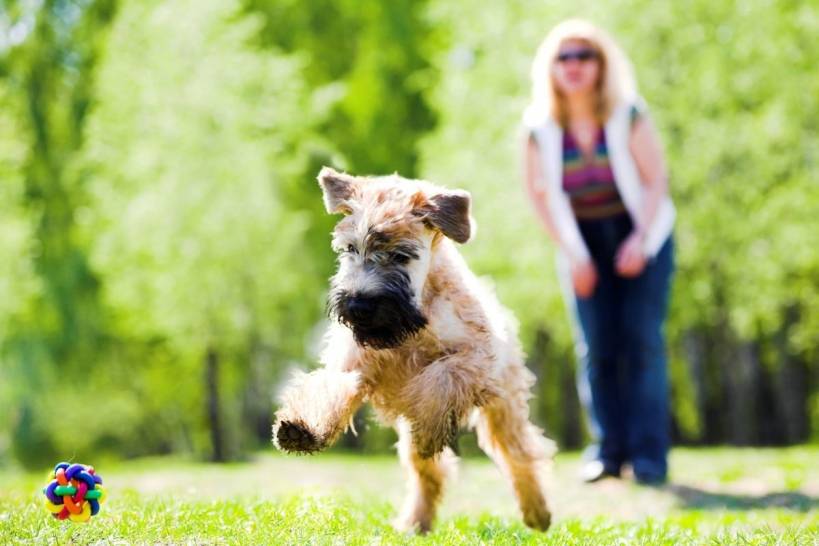Teaching your dog, the basic commands of obedience will make your household a much more pleasant place.
Your dog will be happy because it wants to please you, and because it wants to reap the rewards of good behavior. You will be happier because your dog will be more manageable and will enrich your life. And visitors will be happy not to have to endure a poorly behaved pooch rampaging through the house!
Just as every new human member of a household must be trained to behave properly, so must dogs. Everyone in the household is better off if the dog conforms to the behavior expected of it. That applies to the dog, too.
By nature, your dog wants your approval. It wants to please you (most of the time, anyway!). But it can’t do that without being taught what you expect of it. During your dog’s life, you may decide to teach it to perform all manner of impressive tricks and tasks.
Positive reinforcement rewards wanted behavior rather than punishing unwanted behavior. Training makes learning more enjoyable for your dog and will help to strengthen the bond between you and your pet.
LISTEN TO YOUR DOG
Learn to listen to your dog. If your dog appears to be uncomfortable meeting another dog, animal or person, don’t insist that he say hello. He’s telling you that he isn’t comfortable for a reason, and you should respect that. Forcing the issue can often result in bigger problems down the line.
BE GENEROUS WITH YOUR AFFECTION
Most people don’t have a problem being very clear about when they are unhappy with their dogs, but, they often ignore the good stuff. Big mistake! Make sure you give your dog lots of attention when he’s doing the right thing. Let him know when he’s been a good boy. That’s the time to be extra generous with your attention and praise. It’s even okay to be a little over the top.
DOES HE LIKE IT?
Just because the bag says “a treat all dogs love” doesn’t mean your dog will automatically love it. Some dogs are very selective about what they like to eat. Soft and chewy treats are usually more exciting for your dog than hard and crunchy treats. Keep your eyes open for what he enjoys.
TELL HIM WHAT YOU WANT HIM TO DO
There is nothing inherently wrong with telling your dog “no,” except that it doesn’t give him enough information. Instead of telling your dog “no,” tell him what you want him to do. Dogs don’t generalize well, so if your dog jumps up on someone to say hello and you say no, he may jump higher or he may jump to the left side instead of the right. A better alternative would be to ask him to “sit.” Tell him what you want him to do to avoid confusion.
BE CONSISTENT
Whenever you’re training your dog, it’s important to get as many family members involved as possible, so everyone’s on the same page. If you are telling your dog “off” when he jumps on the couch, and someone else is saying “down,” while someone else is letting him hang out up there, how on earth is he ever going to learn what you want? Consistency will be the key to your success.
HAVE REALISTIC EXPECTATIONS
Changing behavior takes time. You need to have realistic expectations about changing your dog’s behavior as well as how long it will take to change behaviors that you don’t like. Often behaviors which are “normal” doggie behaviors will take the most time such as barking, digging and jumping. You also need to consider how long your dog has rehearsed the behavior. For example, if you didn’t mind that your dog jumped up on people to say hi for the last seven years and now you decide that you don’t want him to do that anymore, that behavior will take a much longer time to undo than if you had addressed it when he was a pup. Remember it’s never too late to change the behavior some will just take longer than others.
FREEDOM
Let your new dog gradually earn freedom throughout your home. A common error that many pet parents make is giving their new dog too much freedom too soon. This can easily lead to accidents relating to house training and destructive chewing. So, close off doors to unoccupied rooms and use baby gates to section off parts of the house, if necessary. One of the best ways to minimize incidents is to keep your dog tethered to you in the house and by using a crate or doggie safe area when you can’t actively supervise him.






